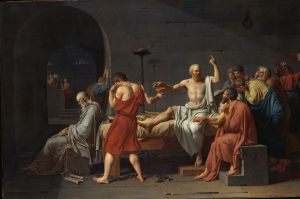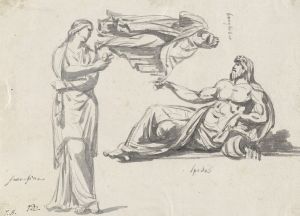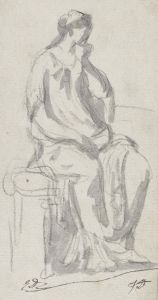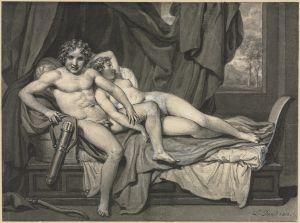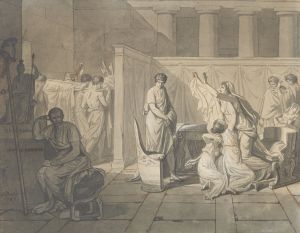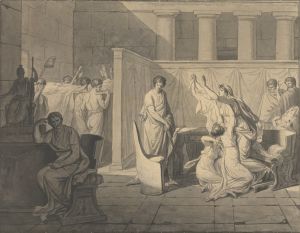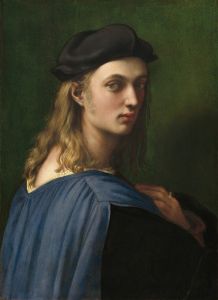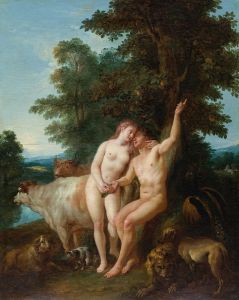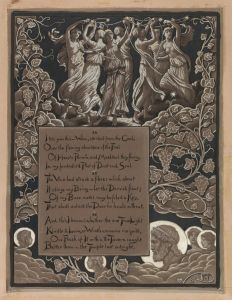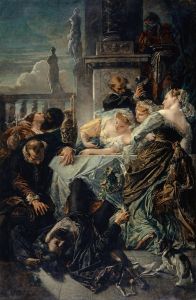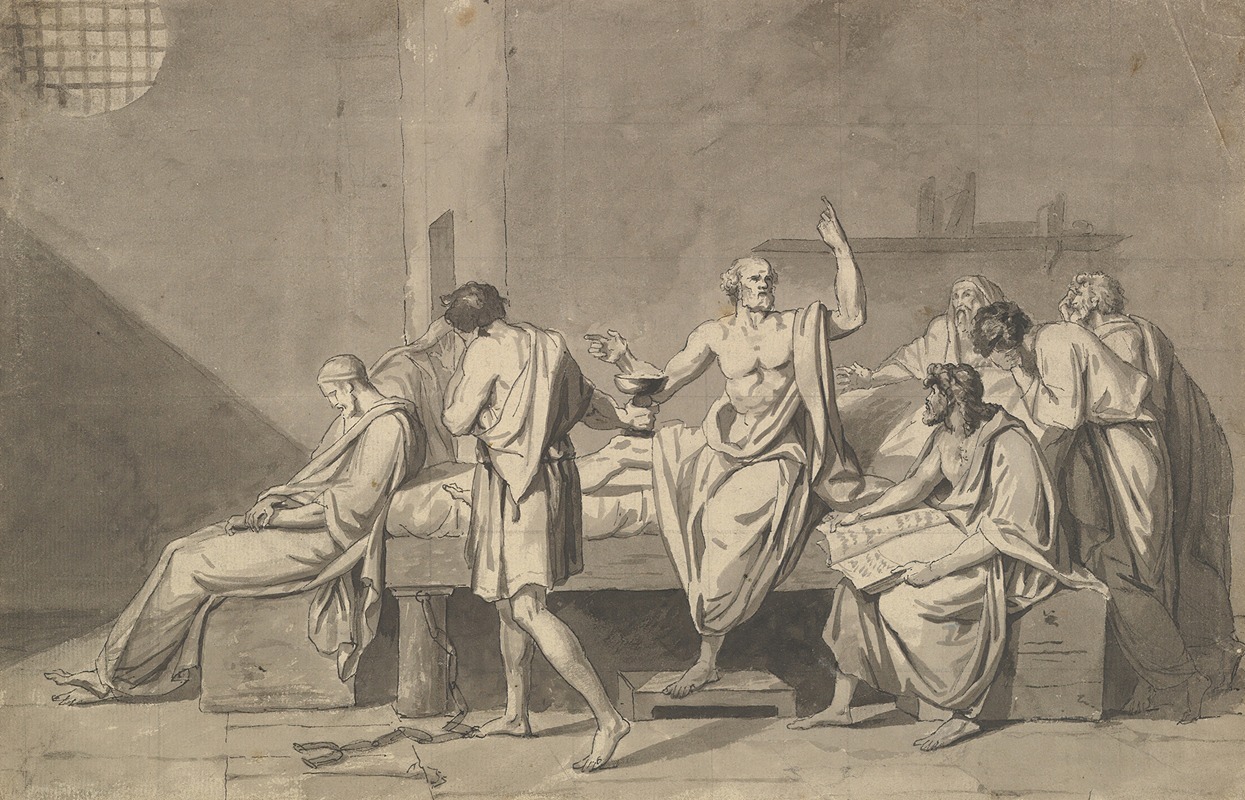
The Death of Socrates
A hand-painted replica of Jacques Louis David’s masterpiece The Death of Socrates, meticulously crafted by professional artists to capture the true essence of the original. Each piece is created with museum-quality canvas and rare mineral pigments, carefully painted by experienced artists with delicate brushstrokes and rich, layered colors to perfectly recreate the texture of the original artwork. Unlike machine-printed reproductions, this hand-painted version brings the painting to life, infused with the artist’s emotions and skill in every stroke. Whether for personal collection or home decoration, it instantly elevates the artistic atmosphere of any space.
"The Death of Socrates" is a renowned painting by the French artist Jacques-Louis David, completed in 1787. This neoclassical masterpiece is housed in the Metropolitan Museum of Art in New York City. The painting depicts the final moments of the ancient Greek philosopher Socrates, who was sentenced to death by drinking a cup of poison hemlock. This sentence was imposed on him by the Athenian government for allegedly corrupting the youth and impiety, or disrespecting the established gods of Athens.
David's painting captures the dramatic and philosophical essence of Socrates' final moments, as described in Plato's dialogues, particularly the "Phaedo." In this dialogue, Plato recounts the events leading up to Socrates' death, emphasizing his calm demeanor and unwavering commitment to his principles. The painting reflects these themes by portraying Socrates as a stoic and composed figure, surrounded by his grieving disciples.
In the composition, Socrates is depicted sitting upright on a bed, reaching for the cup of poison with one hand while gesturing towards the heavens with the other, symbolizing his belief in the immortality of the soul and the pursuit of truth. His expression is serene and resolute, conveying his acceptance of death as a philosopher who remains true to his convictions. The light in the painting is focused on Socrates, highlighting him as the central figure and emphasizing his moral and intellectual superiority.
Around Socrates, David has arranged a group of his followers, each displaying a range of emotions from sorrow to despair. Among them is Plato, depicted as an old man seated at the foot of the bed, despite the historical inaccuracy, as Plato was not present at Socrates' death. This artistic choice serves to underscore Plato's role in preserving Socratic philosophy through his writings. Another prominent figure is Crito, Socrates' close friend, who is shown clutching Socrates' thigh, a gesture of emotional turmoil and helplessness.
David's use of neoclassical style is evident in the painting's clarity, order, and symmetry, reflecting the ideals of the Enlightenment, which valued reason and intellect. The artist's meticulous attention to detail and the use of classical architecture in the background further enhance the painting's historical and philosophical context.
"The Death of Socrates" is not only a tribute to the ancient philosopher but also a reflection of the political climate of David's time. The painting was created during a period of significant social and political upheaval in France, just two years before the French Revolution. It embodies the Enlightenment ideals of reason, virtue, and the questioning of authority, which were central to the revolutionary spirit.
Jacques-Louis David, a leading figure in the neoclassical movement, was known for his historical and allegorical paintings that often carried political messages. "The Death of Socrates" is a prime example of his ability to convey complex philosophical ideas through art, making it a significant work in the history of Western painting. The painting continues to be celebrated for its artistic mastery and its profound exploration of themes such as justice, sacrifice, and the pursuit of truth.





